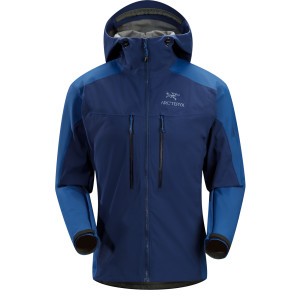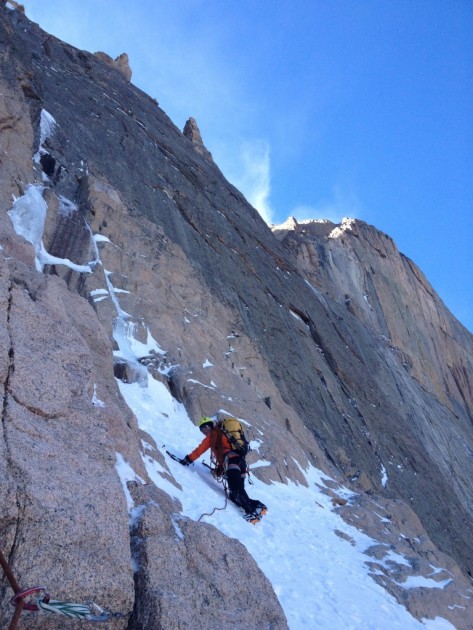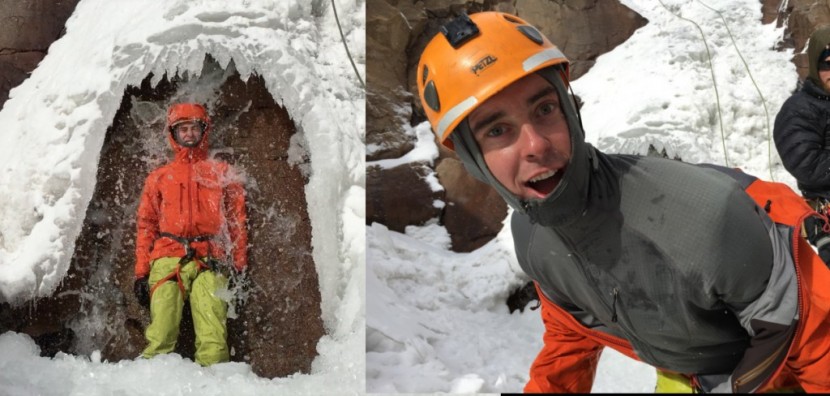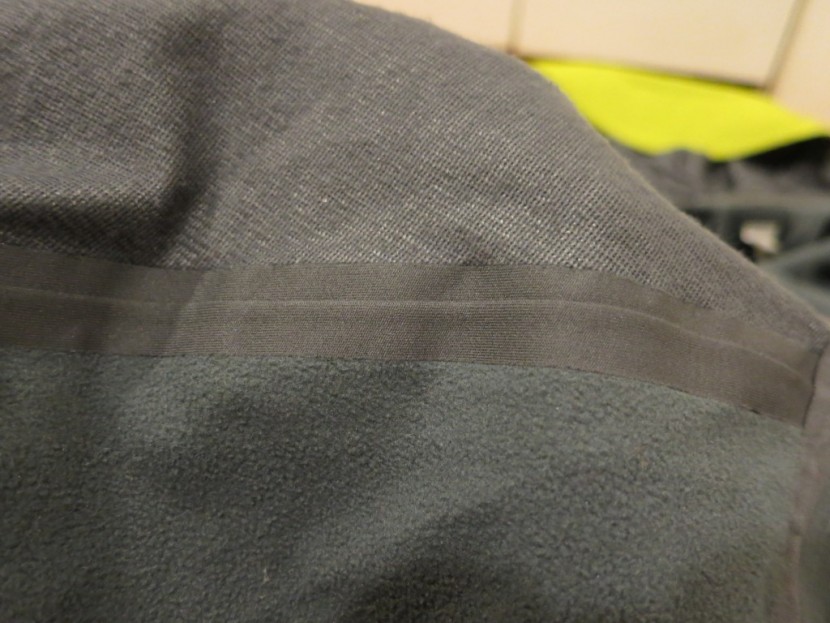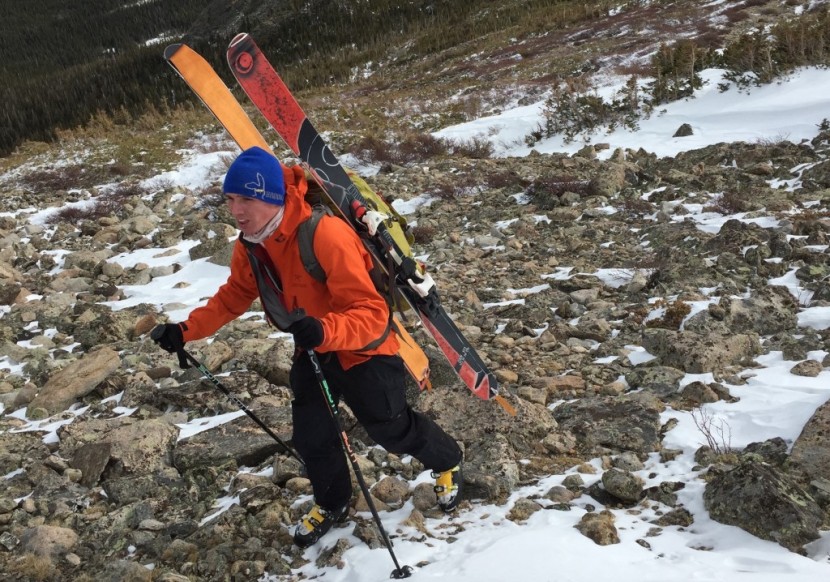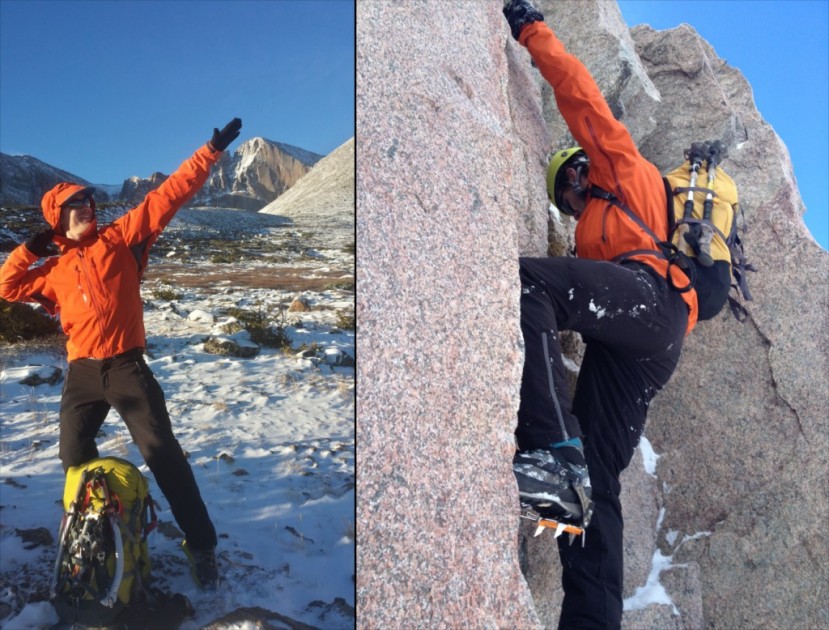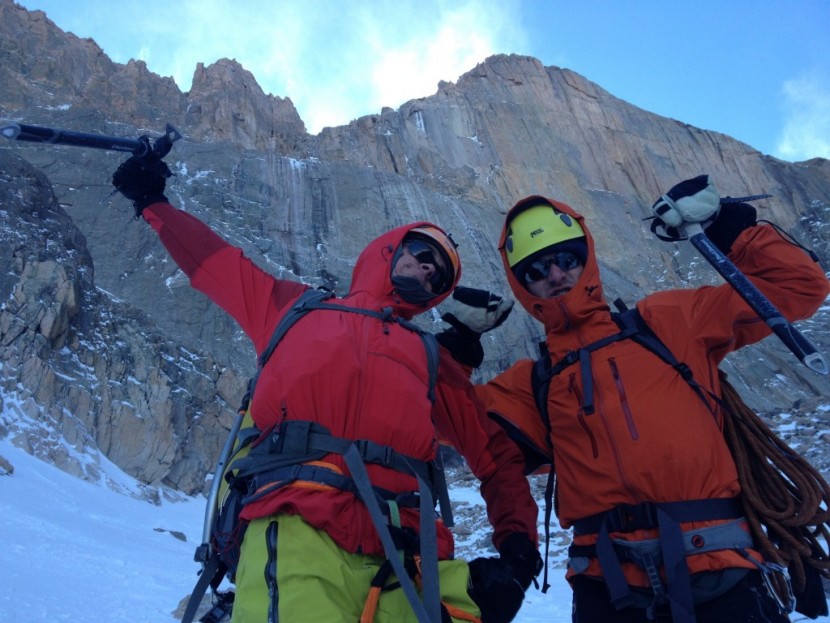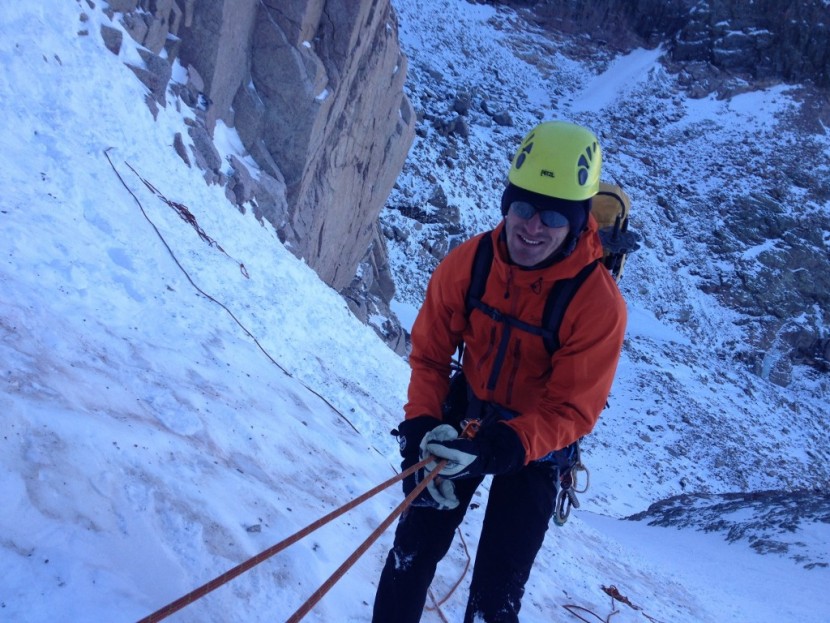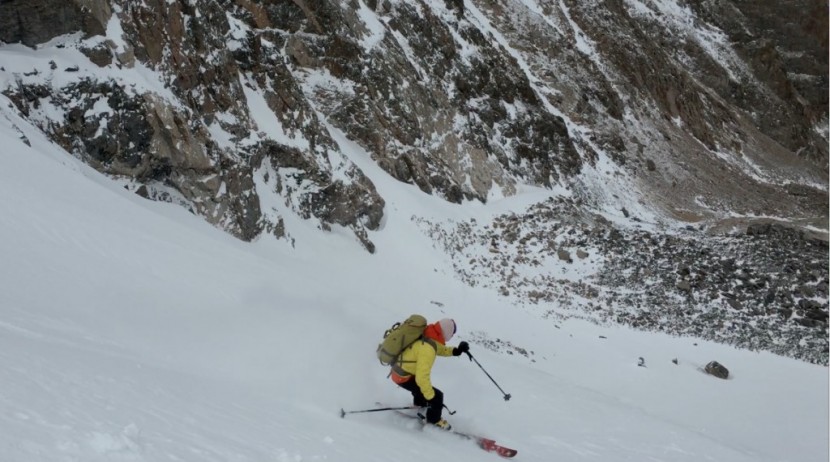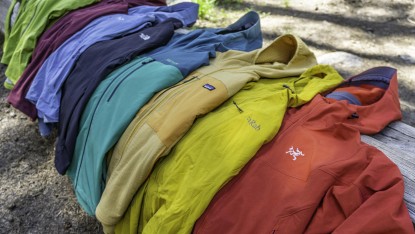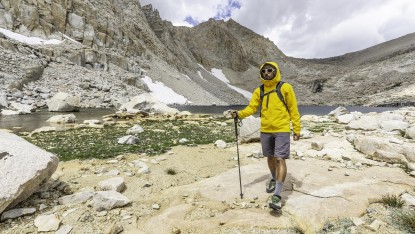Once again, the Arc'teryx Venta MX wins a Top Pick for Ice Climbing. It is the ultimate softshell for ice climbing. It's more breathable and more comfortable than a hardshell, and it's windproof and highly water resistant. The Windstopper membrane keeps you warm when the wind hammers and icicles drip. This jacket has a near perfect blend of features that make it fantastic for ice climbing. Over two years, eight people tested this jacket on trips throughout six US states. Our conclusion after scores of climbing pitches, miles of walking, negative temps, and side-by-side comparison with other jackets is: if you climb a lot of ice and have the cash for a luxurious jacket, our Top Pick winner can't be beat.
The major drawback of this jacket is the lack of breathability. For high output ventures, we typically reach for more breathable softshells such as the Editors' Choice Outdoor Research Ferrosi Hooded. Still, if you want a jacket that provides a little more warmth and breathability than a true hardshell jacket at the expense of weather protection, look no further than the Arc'teryx Venta MX.Arc'teryx Venta MX Hoody Review
Our Verdict
Our Analysis and Test Results
The Arc'teryx Venta MX uses three-layer construction that consists of a tough exterior “face fabric” that resists abrasion, a Gore Windstopper membrane that is windproof and highly water resistant and an interior liner fabric that protects the membrane from wear and body oils. This design creates the most weather resistant type of softshell. We've found that windproof softshells are best for use in very windy conditions: such as ice and alpine climbing, and downhill skiing. However, unless it's very cold, this type of jacket is too warm for most high output activities where other softshells tend to excel.
Windproof softshells are very similar to hardshell jackets. There are two main differences: hardshells are waterproof and lighter, softshells are more breathable and often more durable. In most cases we recommend purchasing a hardshell and a wind jacket before a softshell. See our Softshell Buying Advice Article for more information on the different types of softshells and how they compare to other types of jackets.
Weather Protection
The Gore Windstopper membrane on this softshell stops the wind in its tracks. This makes the jacket well-suited to very cold (<20F) and very windy (>20) conditions during high output activities over a light fleece like the Patagonia R1 Hoody. In more moderate conditions, this jacket didn't breathe well enough to prevent us from getting wet from sweat when working hard. As warmth is concerned, this is a high-end softshell designed to be used as part of a clothing system. Use it on the go, but, when you stop moving, you'll want to throw a puffy jacket over it to avoid getting chilled. For more information about how softshell jackets work, read our buying advice article.
Like all Windstopper and Polartec Powershield Pro softshells, the Arc'teryx Venta MX is highly water resistant. During our waterfall test, this softshell kept our tester completely dry. However, when rain storms unexpectedly enveloped several of our testers, the jacket only kept us dry for about 30 minutes. After that, we were soaking wet and chilled to the bone. This lack of weather protection is one of main reasons why softshells are a niche, luxurious apparel type; they are designed for a very narrow set of activities and conditions.
Breathability
This softshell is slightly more breathable than a hardshell jacket. We consider this type of softshell to be a “hardshell style softshell” because it uses a membrane. In side-by-side testing with the Arc'teryx Alpha FL hardshell, we found the Arc'teryx Venta MX to be more breathable, i.e., we could wear it longer without unzipping the front for ventilation. We very much appreciate the improved breathability compared to a hardshell. However, compared with other softshells, this jacket breathes quite poorly. Strenuous, uphill pushes caused us to overheat and take this jacket off to avoid wetting out our mid layer with sweat. Breathability and weather protection are inversely correlated and this jacket falls much more on the weather protection end of the spectrum. As such, breathability suffers.
This was the only softshell to feature pit zips. For reasons explained in the features section of this page, we don't think that pit zips add very much real world breathability on softshell jackets.
Mobility
This product is incredibly comfortable. It isn't crinkly and crackly like a hardshell, it stretches slightly, and it fits impeccably due to the ergonomic patterning (the elbows are wonderfully articulated). The jacket moves with you, rather than you moving within the jacket. Lifting your arms above your head barely lifts the waist hem. In contrast, many other softshells lift 4-6 inches. The Arc'teryx Venta MX is also slightly longer than average, keeping you warmer when climbing because it stays tucked under a harness even when your arms are above your head. The arms are also longer than many other shells, which helps prevent snow from attacking your wrists when climbing with under-the-cuff style gloves. These features offer a tremendous advantage over the majority of the softshells we tested.
Weight
Our Top Pick for Ice Climbing weighs 20 ounces on our scale and packs down to moderate size. It's smaller and lighter than many other fully featured, hooded Windstopper softshells we've tested. For the weight, however, combining a much lighter softshell (like the Outdoor Research Ferrosi) with a light rain jacket (like the Marmot Essence) would be lighter, more versatile, and work better in a variety of conditions. However, this combo would would fall behind the Arc'teryx Venta MX in cold, damp, situations that require durability e.g., squeezing through rocky chimneys or fierce bushwhacking.
Features
This softshell has nearly the same feature set as the Arc'teryx Alpha SV (the company's top-tier expedition style climbing hardshell). The chest pockets are large enough to easily stuff gloves, a camera, and some bars inside. Critically, the chest pockets are harness and pack compatible. The crossover design is faster to open and keeps your arms closer to your chest than other pocket styles. This helps to keep you balanced while climbing.
During our tests, we tried to abrade this jacket through tight squeeze chimneys in the tough granite of Joshua Tree. It came back nearly spotless. From our tests, we have no doubt that this jacket will be durable enough for very harsh conditions.
This is one of the only softshells we've tested that has pit zips. We think that pit zips are unnecessary on softshells because you can achieve greater venting through the main zipper. Venting this way with a waterproof jacket in the rain would leave you soaked. Hence the need for pit zips on waterproof jackets. If you're wearing a softshell and it starts to rain, you're probably going to put on a waterproof jacket, thus negating the real need for pit zips. On this jacket, pit zips aren't a negative feature, but we do think they are an unnecessary feature.
Finally, the hood on the Venta is exceptional. Like the Alpha SV, it's very large and is comfortable to wear over a helmet. It adjusts in four places: two front adjustments pull the hood in around your face, the top rear cord reduces the volume for use without a helmet, and a bottom rear cord pulls the hood brim back away from your face. We've seen a wide variety of hood designs and, of all of them, we believe the Arc'teryx Venta MX is one of the best. There are two minor drawbacks. (1) The two front adjustment cords pull from the inside of the hood, rather than the outside. This is not as easy to adjust on-the-move because you need to unzip the jacket and reach inside (some testers actually preferred this because the adjustment-pulls stay in the jacket rather than flapping around in high wind). (2) We would prefer slightly more chin coverage like the Alpha SV. These are minor drawbacks on an otherwise exceptionally well-featured jacket.
Style & Fit
All of our testers found this shell to be very attractive. If you're a style-conscious climber or skier, or even if you just want to look like one, this jacket is the piece for you. But the crossover chest pockets add a technical aesthetic that's not ideal for use around town as you can't keep your hands warm without looking like a mummy.
If you're looking for a stylish softshell primarily for urban environments, we think that jackets with good hand warmer pockets like the Patagonia Adze are superior. The Arc'teryx Venta MX is a technical softshell for ice climbing; it looks great in the mountains but wasn't designed for urban use. If you're looking for urban apparel made with technical fabrics and desire the refined touch Arc'teryx puts into their garments, check out the company's Veilance line.
Best Applications
Our Top Pick winner is well-suited for activities like ice climbing that entail cold, damp, and windy environments. It also works very well for alpine skiing, but other softshells, like the Arc'teryx Venta SV, perform better for skiing.
Value
Our testers loved climbing in the Arc'teryx Venta MX. We all agree that this the Ferrari of ice climbing softshells - it's very specialized and very expensive. At $450, you could buy several other garments that would give you more versatility. But do you buy a Ferrari because it's the most practical? No. You buy it because it's the best at doing what it was designed to do. If you have the cash for a fantastic jacket, we suspect that you'll love the Venta MX as much as we did.
The majority of our testers use a hardshell for ice climbing because hardshells are lighter, more versatile, and offer a better value than softshells. Hardshells do everything well and softshells generally do one thing very well.
Conclusion
This jacket is our Top Pick for Ice Climbing. The excellent fit, features, and weather protection make it top tier shell for cold, windy conditions. It breathes better than most hardshell jackets, but worse than softshells that lack laminated membranes. If you enjoy kicking ice and want one of the best ice climbing jackets on the market, you're bound to love the Arc'teryx Venta MX.


